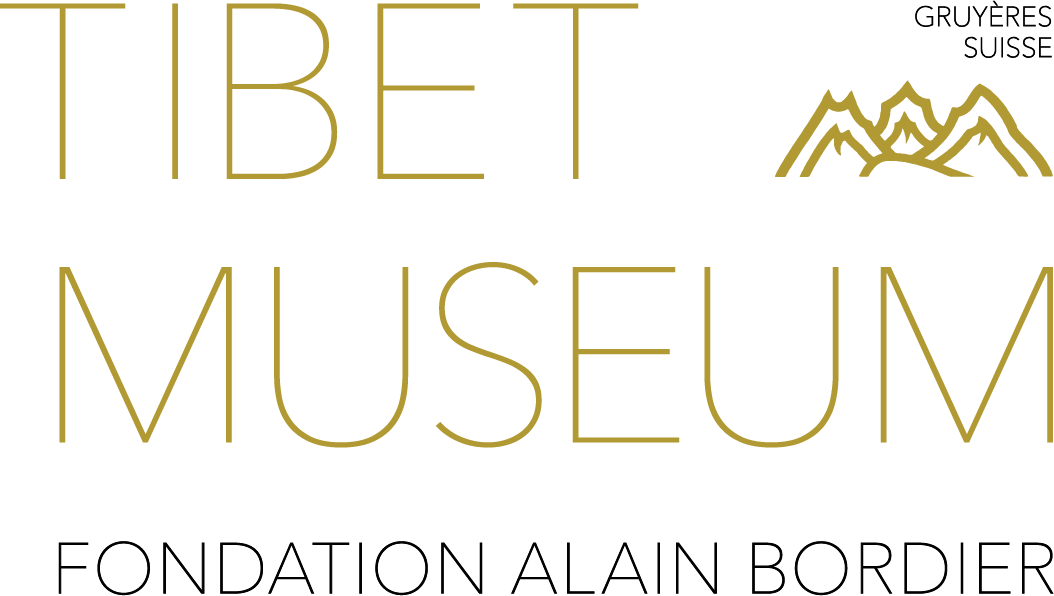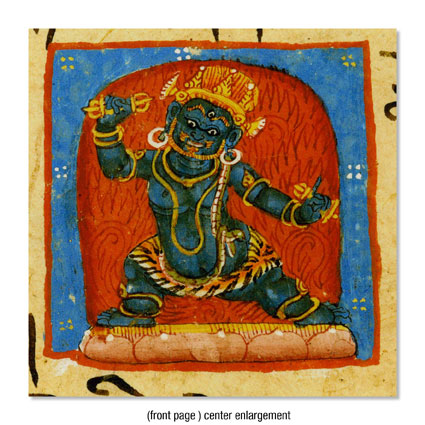Illuminated page of the Prajnaparamita-Sutra – Vajrapani and Buddha Shakyamuni
See it in the Museum

Reception desk
Orientation 3
Wall object 11

ABM 024
Code: ABM 024
Country: Tibet (west)
Style: Purang-Guge Kingdom
Date: 1100 - 1200
Dimensions in cm WxHxD: 67.8 x 20.5
Materials: Distemper on paper
This paper manuscript leaf of a Tibetan translation of the Asthasahasrika Prajnaparamita-Sutra written in dBu can (üchen) script is illustrated with Nilambaradhara-Vajrapani and Buddha Shakyamuni. The manuscript was discovered in 2004 inside an abandoned and hidden cave in Western Tibet. Information about the location of the cave could not be obtained. The folio is numbered as Volume kha, page nga lnga (55).



